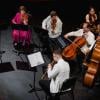
The ability to design a recital program with total freedom is not a luxury that most artists can count on. But since its founding two decades ago, Music@Menlo has offered guest artists the chance to do exactly that. In its “Carte Blanche” series, a staple of the festival since 2004, musicians with a strong vision have “the opportunity to play a dream project of their own,” said Wu Han, Music@Menlo’s co-founder and co-artistic director. For Jean-Efflam Bavouzet, that dream project was to perform the complete solo piano music of Maurice Ravel in a single afternoon.
One of the foremost French pianists of his generation, Bavouzet maintains a busy touring schedule on both sides of the Atlantic (and Pacific) and has a prolific output of recordings on the Chandos label. As an interpreter, he combines seriousness and rigor with an infectious and unmistakable energy. Wu Han, a longtime friend and collaborator of the pianist’s, recalled that she recognized Bavouzet’s creative drive from the moment they first played together. “Everybody says I’m pretty energetic,” she explained, “but when I’m next to Jean-Efflam, it’s like I’m half asleep compared with him. There is always excitement, even from two notes.”
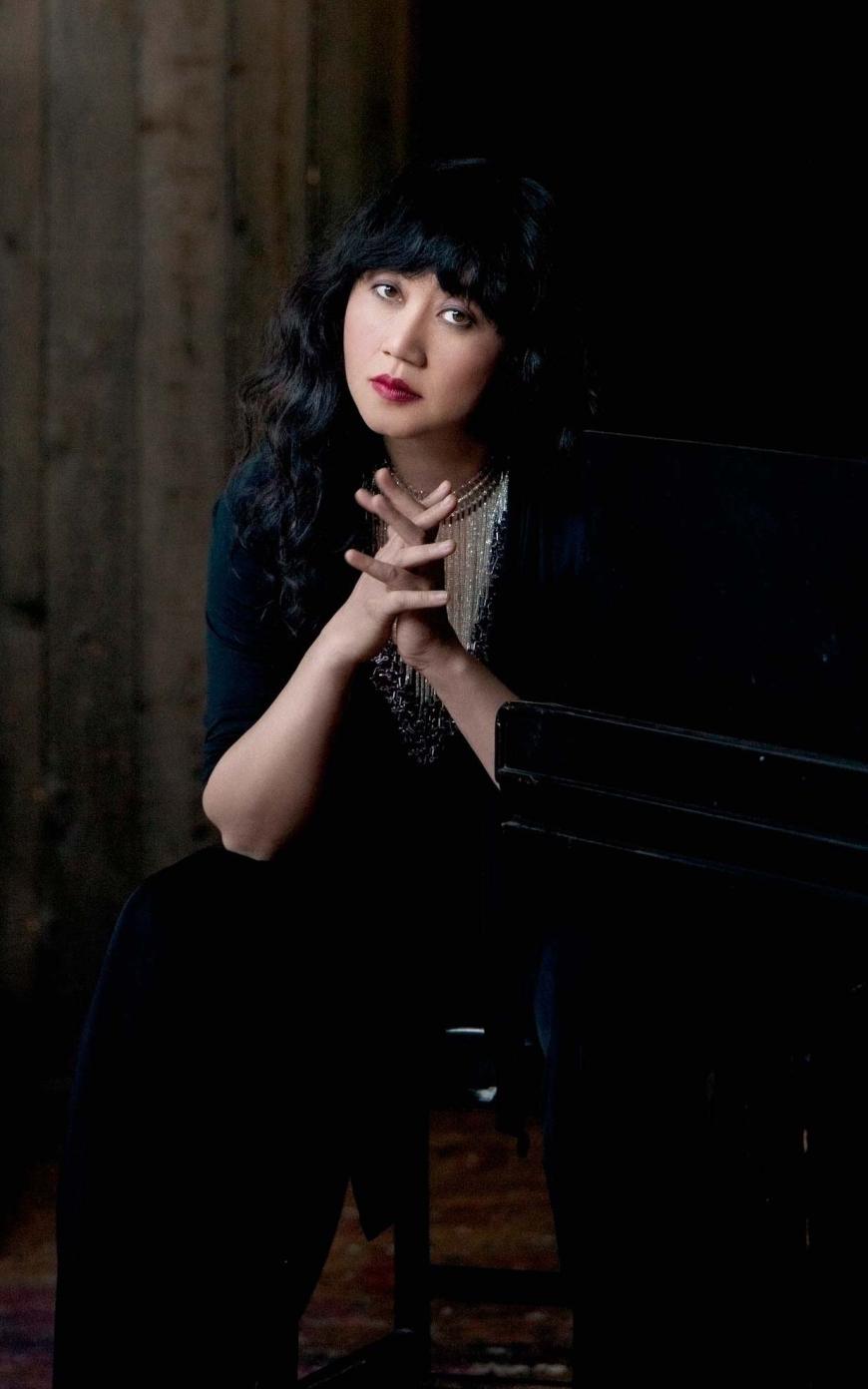
Music@Menlo’s 2024 season, entitled “French Reflections,” focuses on the correspondence between music from France and other countries. Fittingly, although Bavouzet is performing exclusively French music at the festival, he draws from an expansive range of influences, from the electronic music of Karlheinz Stockhausen to the jazz-fusion YouTube phenomenon Jacob Collier, whom Bavouzet places alongside Joseph Haydn, Claude Debussy, and Igor Stravinsky as “composers who make you intelligent.”
In addition to his “Carte Blanche” recital on July 28 — which is currently sold out — Bavouzet will appear on two other collaborative programs, performing his own two-piano transcription of Debussy’s Jeux with Anna Geniushene and Gabriel Fauré’s Dolly Suite with Wu Han (Aug. 3) and Claude Debussy’s Première rhapsodie for clarinet and piano alongside Jose Franch-Ballester (Aug. 7).
Ahead of his visit to California, SF Classical Voice sat down with Bavouzet. In a wide-ranging conversation that has been edited for length and clarity, he discussed his approach to interpretation, his conception of French music, and the transcription of Debussy that he will perform at Menlo.
Why did you choose to perform Ravel’s complete solo piano works for your “Carte Blanche” recital?
While I was preparing the recording [Ravel: Complete Piano Works (MDG, 2003)], I realized that actually it’s very possible to present all the pieces in one concert, in one evening. The amazing thing is the relationship between the immense place of Ravel in music history and in the hearts of music lovers and musicians and the number of minutes [of music] he actually wrote. I haven’t counted, but I suspect that if you took his entire output, it might not be as long as even [Richard Wagner’s] Lohengrin or Parsifal. You know what I mean?
[Ravel’s] piano music alone is only two hours and 15 minutes, which, if you put two intervals, is very digestible for the audience. And [another] thing I like is that you can very easily present [the pieces] in absolute chronological order. Ravel is not a composer who changes his style as much as Beethoven or even, I’ve found, Debussy’s span of styles. There is an evolution, but it’s not so obvious. So you can present them in chronological order, and you finish with the Toccata [from Le Tombeau de Couperin], which is a good piece to finish with.
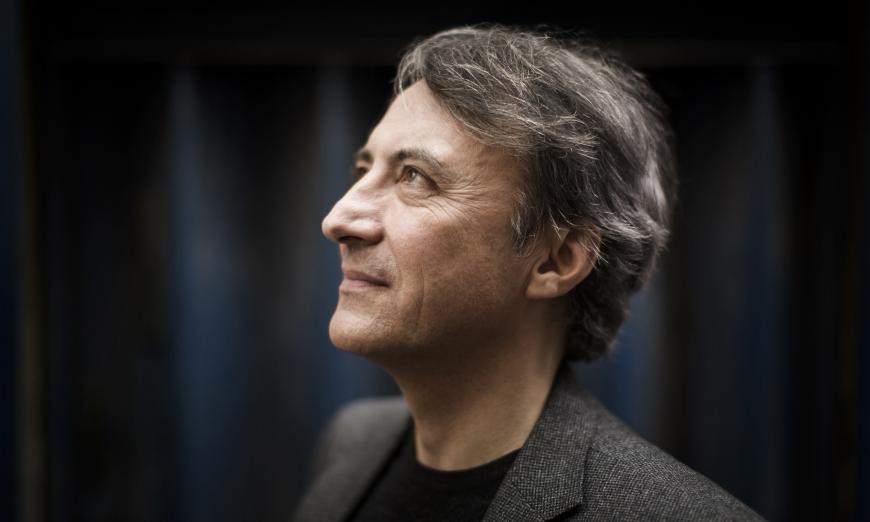
This year, Music@Menlo is focusing on the connections between French composers and other traditions — Russian, American, German, for example. Given that you come from a French tradition, how do you approach the idea of a French musical character?
I do believe in national sensitivity — I don’t know if you can call it a “school” — but a national approach to sound — or to space, if you think in terms of architecture or colors or paintings. In the case of the impressionists — who, by the way, never called themselves impressionists — there is clarity in the harmonic language, which is a kind of trademark of the French sensitivity.
And I would say proportion [is a trademark as well], in the sense of trying to express sometimes unbearable tensions but with a surface which has a lot to do with elegance, restraint, and a special care for clarity. And that does not mean that what is underneath is only pale or has to be taken delicately. No, it can actually be very violent and devastating. But the surface is distant in a way. We cannot imagine Debussy looking at the skies and making big gestures, playing at the piano as, for example, I can easily imagine Beethoven sweating, roaring, bounding around, and getting possessed by the musical flow he’s creating. Debussy, absolutely not. [The French] guide the music with a clear mind.
Ravel, a man who was always taking such care of his looks, of his fashion, how he almost canceled his tour in America because he was not sure if his cigarettes were sold there — he wrote his scores so meticulously and really asked his interpreters not to take any personal initiative and to be slaves, basically, to the score. He said to [the conductor Arturo] Toscanini — after an extremely successful performance of Boléro — [that] he had only two words: “too fast.” And when Toscanini said, “But look at the great success we had,” then apparently Ravel said, “Then don’t play it.” [Laughs.] “Either you play at the speed I requested, or you don’t play it at all.”
So you’re happy to make yourself a slave to the composer’s instructions?
This is something I have absolutely no problem with because I feel like the slave of any composer I play. My ultimate goal is to be totally transparent and to have the illusion — because it can only be an illusion, especially if the composer has been dead for 200 years — that I do justice to what I think the music should be, based on what the composer [in the score has] told me. And so I’m always a slave. And when I cannot honestly be a slave, I just don’t play the composer.
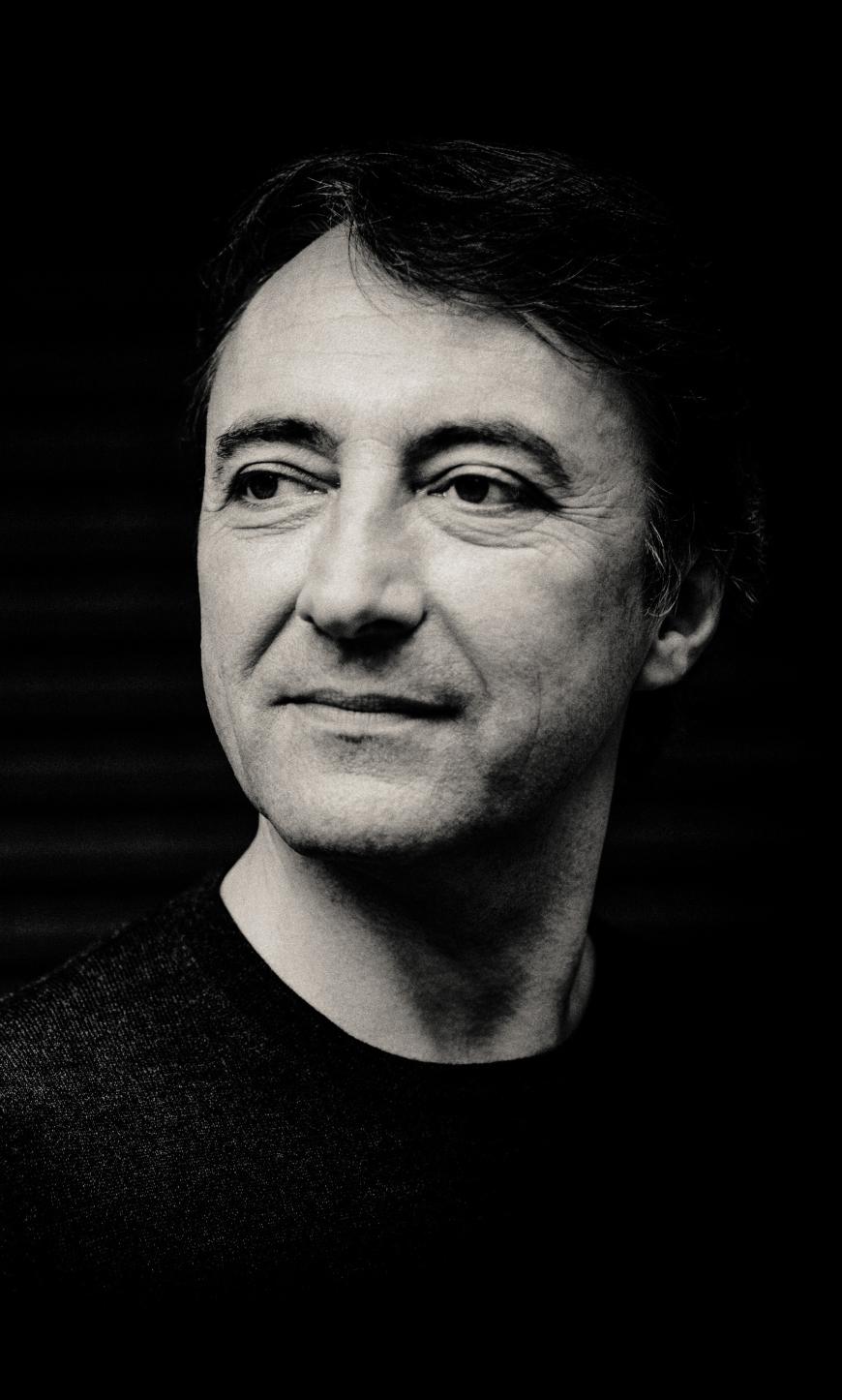
My mood doesn’t count at all. I am an absolute nobody. So I don’t sit at the piano and say, “Oh, now I’m happy. I’m going to play.” No, I practice, and the mood I’ve got is the mood of the music I’m playing because, like a chameleon, I have to fit in the shoes of the composer and the piece — like any actor who would have to play a role.
You see, all the great concerts I’ve heard from, for example, Sviatoslav Richter had the feeling that Richter didn’t exist. I was actually facing Haydn — the paradox being that you recognize Richter’s playing after three seconds. It’s completely paradoxical. So I don’t aim to be recognized. I sometimes don’t even recognize my own playing.
But, as with Ravel’s own compositional process, I imagine that creating an effortless, transparent quality as a pianist takes a lot of hard work behind the scenes.
Let me tell you, it’s bloody hard work. Coming onstage you can find yourself very tired, of course, with jet lag or whatever. But I remember so many times even thinking, “I have a bad cold. I feel terrible,” and the best medicine I can find is to play [Sergei] Prokofiev’s Second Piano Concerto. And let me tell you, that cures any cold! It’s happened to me a number of times. I think it probably has to do with the adrenaline, no doubt.
On the “Piano/Piano” program on Aug. 3, you will be playing your own two-piano transcription of Debussy’s Jeux. Can you tell us about that transcription?
I am, of course, terribly excited to speak to you about it. It was a suggestion of Zoltán Kocsis’s, the Hungarian pianist, with whom I was playing back in 1995. I’d never made any transcriptions then. I had played a few, and I was suddenly possessed by the parallel [suggested by Debussy’s score] between the wonderful instrument we have — I’m speaking of the piano — and the orchestra. It was probably one of the most enriching experiences of my life as a pianist, but I didn’t know what I was getting myself into because Jeux is an incredibly complex score. Just the string section at one point is divided into 15 parts. [It’s] one of the most fascinating pieces ever written in this period because it’s constantly in evolution. There is never a recapitulation of things. There are some little jumps backward, just a couple of pages or bars, and then you go somewhere else.
There is a story [for Jeux]. There is a synopsis, with this flirting situation between one boy and two girls. Actually, it’s really jeux [games more broadly]. It’s obviously more of an erotic game than tennis [the scenario presented to the audience at the piece’s 1913 premiere]. The tennis was just because it was en vogue at the time, but there is almost nothing referring to the game [in the score]. It’s referring more to flirting and eventually ecstasy.
How do you think this transcription contributes to our appreciation of the piece?
This was the only orchestral score by Debussy that didn’t have a two-piano version. When I finished my [transcription], I played with Kocsis several times, and then I bumped into a letter from Debussy to [his publisher Jacques] Durand: “I am finishing a two-piano version of Jeux.” And I was astonished. First of all, I was worried about my own transcription, but then it actually reinforced me. The manuscript of this two-piano version is nowhere to be found, and it would not be a surprise if it was actually a lie that Debussy told just in order to get more money from Durand.
He was a very practical guy.
Well, that’s a very nice way of saying that, you know. But two pianos, it means it has to be played onstage. And so that reinforced the validity, so to speak, of my own transcription. And it’s not so much that I am claiming that transcriptions are wonderful — some of them are not entirely necessary. But Jeux is not that often played in concert. It takes too much rehearsal time. It’s a flop with the public. To do it properly, to do justice to the score, which is full of cédez, ritenuto, and even rubato — now, don’t ask me how you do rubato when you have 60 musicians!
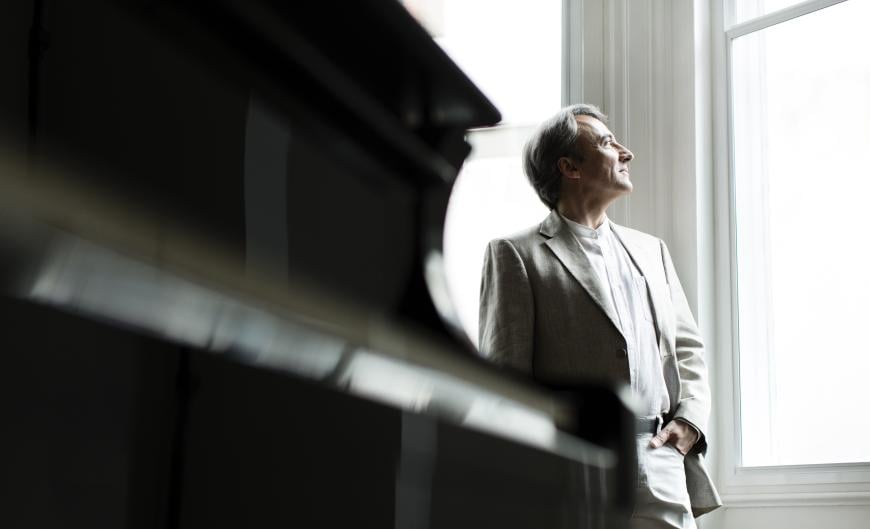
So played in a recital, actually, it can make people wonder, “Ah, I didn’t know this piece by Debussy.” On top of it, all the rubato and accelerando and ritenuto are much better done by a pianist alone or even two pianos. And in my transcription, I was always trying to switch up the rapport between the two pianos to add variety because, of course, no two pianos have exactly the same sound and no two pianists have exactly the same sound. But you can add a lot of effect by using resonance and what has to be done with pedal, without pedal. And the rhythmical, the agogic flexibility, that’s probably the only thing — in the case of Jeux — that a transcription can add to the orchestral score.
I’m very happy to have done this transcription. And I’m very happy to play it with Anna Geniushene, whom I heard at the Van Cliburn Piano Competition two years ago, and she really moved me to tears during the competition. So I’m very happy to play with this great, great artist.




